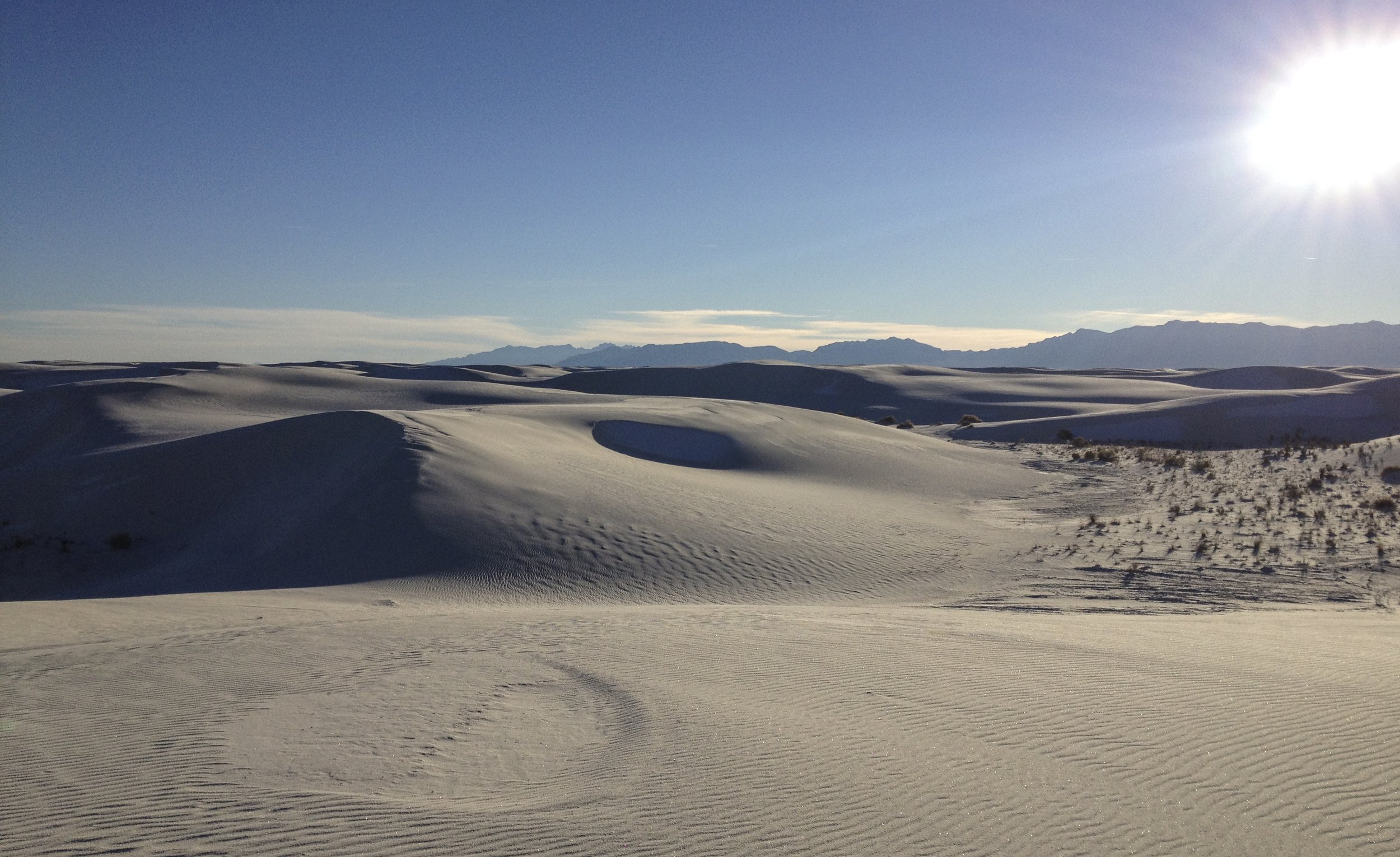Mackenzie Day on Dunes
Mackenzie Day is an Assistant Professor in the Department of Earth, Planetary, and Space Sciences at the University of California, Los Angeles. She studies aeolian processes in the field and with wind tunnel experiments. In the podcast, she explains how dunes can reveal ancient wind speeds and directions, as well as how much sediment was available when the dune formed. She also describes the dunes we have seen on Mars, Titan, and even on a comet.
Listen to the podcast here or wherever you listen to podcasts.
Scroll down for illustrations that support the podcast.
Note - playing the podcast is not supported on Internet Explorer; please use any other browser, or listen on Spotify, Apple Podcasts, etc.
Podcast Illustrations
All images courtesy of Mackenzie Day unless otherwise noted.
Stacked sets of aeolian cross-strata in the Jurassic Navajo Sandstone in Zion National Park, Utah. The horizontal features are bounding surfaces between different individual dune deposits.
Cedar Mesa formation in the Canyonlands National Park, Utah. This Permian aeolian sandstone is about 500 m thick. The colors were imparted to the sandstone after deposition, and indicate the concentration of iron in subsurface water.
The Wave, in Arizona, consists of large-scale sets of cross-bedded aeolian sandstone. The bedding features were formed by a cycling between the flow of grains down the slope of a dune and rippling by the wind. This indicates there were periodic changes in the prevailing winds during the Jurassic as large sand dunes migrated across a sandy desert. The thin ridges and ribbing are caused by differential erosion resulting from the variation in the strength of the sand cementation as a function of grain size.
Courtesy of Brian Passey/The Spectrum & Daily News
Gypsum dunes, White Sands, NM. Gypsum dunes are unusual since most sand dunes are made of quartz, feldspar, and iron oxides. Being very soft, gypsum does not survive transport well, and so such dunes can form only when the source of the gypsum sand is nearby.
Grain flow on the lee face of a modern dune in Oregon. Each lobe is a grain-flow avalanche. The cumulative effect of such avalanches is to migrate the dune in the down-wind direction. Wind ripples in foreground indicate the effect of turbulent eddies, which cause ripple branches to veer to the left.
Wind ripples on the stoss (upwind) side of a dune in Algodones, Californa. The parallel ripple crests are perpendicular to the wind, with characteristic tuning-fork branching. Such active ripples are preserved in the rock record as pin-stripe laminae, which are the thin layers left behind by the migrating ripple.
Wind ripples in the Jurassic Navajo sandstone at Arches National Park, Utah.
Jurassic Page sandstone, with intermediate-scale wedges in the upper part of the image formed by grain flows (avalanches) down the lee side of a dune. At the smaller scale, wind ripples appear in the lower part of the image. The passage of a dune leaves the largest-scale structures in the sandstone, as seen, for example, in the Zion National Park image which appears as the first illustration above.
Aeolian Features on Mars
Aeolian sandstone with large-scale crossbedding on Mars's Mount Sharp as seen by the Curiosity rover. The beds slope towards the left indicating that the prevailing wind was from the right.
Courtesy of NASA/JPL-Caltech/MSSS
Barchan dunes on the Martian surface taken in December 2013 by the Mars Reconnaissance Orbiter. Each dune is about 100 m across. They were formed by wind blowing from top to bottom.
Courtesy of NASA-JPL-University of Arizona
Wind tunnel experiments with low-density particles to simulate the lower gravity of other bodies in the solar system such as Mars. The goal of these experiments is to determine how much wind it takes to move low-density particles as analogs to sediment on other planets by matching the effective gravity or downward force on the grains in the transporting system.
Courtesy of Jordan Bretzfelder
Ripples on the surface of comet 67P/Churyumov-Garasimenko as seen by the Rosetta spacecraft. In the upper image, the central bedform (yellow arrow) has a length of about 20 m and a height of about 2 m. In the lower image, the crest-to-crest distance ranges from about 7 m for the emergent ripples (orange arrows) to about 18 m for the larger bedforms (yellow arrows). The picture was taken on September 18, 2014, which was before perihelion. Superimposed in yellow are the positions of ripples from a photo taken 16 months later, which was after perihelion, revealing activity in the dunes.
Jia et al. (2017), Proceedings of the National Academy of Science, 114, 2509
Image Courtesy of ESA/Rosetta/MPS












